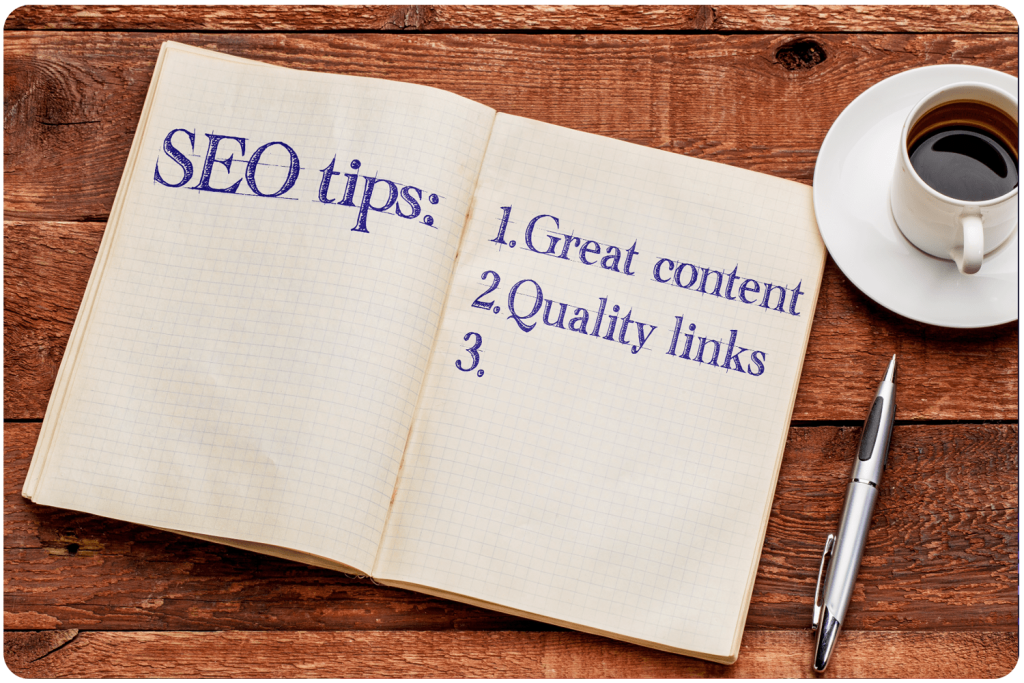SEO is a cost-effective alternative to paid advertising, ensuring a steady flow of continuous traffic. Its proven efficacy in lead generation and return on investment makes it a valuable asset for long-term success. Investing in BigCommerce SEO can enhance search visibility and increase organic traffic. Tailor your strategies based on performance data to maximize the benefits.

What is Ecommerce SEO?
Over the years, SEO has undergone significant transformations, driven by continuous updates to algorithms and processes by major search engines such as Google and Bing. The evolving landscape now emphasizes the integration of machine learning to monitor and assess user behavior, underscoring the importance of optimizing content and user experience. Thus, when contemplating SEO, it is essential to consider search engine optimization and the optimization of the overall search ‘experience.’
While SEO may seem intricate, developing a keyword strategy and attending to the fundamentals can be achieved swiftly. You can make substantial progress by implementing the advice and strategies outlined in this guide and leveraging freely available online resources.
Before examining detailed SEO strategies, it is prudent to grasp a few overarching concepts that serve as the foundation for subsequent chapters. SEO is depicted as a journey rather than a destination, requiring patience and persistence for success. Each market, vertical, and product presents a unique SEO landscape, demanding adaptability to changing circumstances. Even after achieving a commendable ranking, ongoing adjustments are necessary as search engines evolve.
Most ecommerce platforms offer built-in SEO features to facilitate optimization. These features include automatically generated SEO-friendly URLs for product and category pages, with the option to customize URL settings. Ensuring unique URLs for each page prevents penalties for duplicate content. Integrating microdata, or “rich snippets,” enhances search result listings by providing additional information such as ratings, pricing, brand, and stock levels. Furthermore, the platform incorporates 301 redirects and URL rewrites, automatically adjusting URLs when product names change and redirecting old URLs to new ones. Including a content delivery network (CDN) ensures swift site loading for both users and search engines, as site speed directly impacts search rankings.
Ecommerce SEO Tips:
1- Register your website with Google Search Console and Bing Webmaster Tools to monitor crawling, indexing, and performance:
-
- Google Search Console and Bing Webmaster Tools are essential tools for ecommerce SEO. They provide valuable insights into how search engines are interacting with your website, including crawling, indexing, and performance.
- By registering your website with these tools, you can monitor for any crawling or indexing issues, track search impressions and clicks, and receive notifications about potential problems.
- This information can help you identify and address technical SEO issues, as well as measure the effectiveness of your SEO strategies.
2- Make optimizing high-priority pages like homepage, product pages, and category pages a key focus for maximum ROI:
-
- The homepage, product pages, and category pages are typically the most important pages for ecommerce websites in terms of driving traffic and conversions.
- Focusing your SEO efforts on optimizing these high-priority pages can have a significant impact on your overall search performance and return on investment (ROI).
- Ensure these pages are well-optimized for target keywords, have compelling content, and provide a seamless user experience to maximize their visibility and conversion potential.
3- Create website content focused on crafting a positive, seamless experience for visitors to drive engagement:
-
- In addition to optimizing for search engines, it’s crucial to create content that provides a positive and engaging experience for your website visitors.
- This can include informative product descriptions, helpful blog posts, and visually appealing product images and videos.
- By prioritizing the user experience, you can improve engagement metrics like time on site, bounce rate, and ultimately, conversions.
4- Research relevant keyword terms thoroughly using tools to uncover buyer keywords to target for traffic and conversions:
-
- Conducting thorough keyword research is the foundation of effective ecommerce SEO.
- Utilize tools like Google Keyword Planner, Semrush, and Ahrefs to identify relevant keywords that your potential customers are using to search for products like yours.
- Focus on buyer keywords, which are more likely to lead to conversions, in addition to broader informational keywords.
- Understand the search intent behind the keywords to create content and optimize pages that align with what your target audience is seeking.
5- Build high-quality backlinks from external websites to earn trust and authority in search engine algorithms:
-
- Backlinks, or links from other websites to your ecommerce site, are a crucial ranking factor in search engine algorithms.
- Aim to build high-quality backlinks from reputable, relevant, and authoritative websites in your industry.
- This can be achieved through tactics like guest blogging, public relations outreach, and leveraging your existing relationships with industry partners and influencers.
- By earning these valuable backlinks, you can signal to search engines that your website is a trusted and authoritative source, leading to improved rankings.
6-Craft compelling, clickable page titles that communicate clearly to searchers what the page offers:
-
- The page title is one of the most important on-page SEO elements, as it directly influences how your listing appears in search engine results pages (SERPs).
- Craft titles that are concise, descriptive, and enticing to searchers, clearly communicating the content and value of the page.
- Incorporate target keywords naturally within the title, without keyword stuffing, to improve relevance and click-through rates.
7-Write meta descriptions that concisely summarize page content in an appealing way to boost click-through rates:
-
- Meta descriptions are the short summaries that appear under page titles in search results.
- Craft compelling meta descriptions that accurately and concisely summarize the page content in an appealing way to encourage clicks.
- Include target keywords, but focus on creating a description that is informative and engaging for users.
- Well-written meta descriptions can significantly impact your click-through rates from search engine results.
8- Add schema markup for rich results like ratings, reviews, events, etc. to stand out in search listings:
-
- Schema markup, also known as structured data, is a way to provide additional information about your web pages in a format that search engines can easily understand.
- By implementing schema markup on your ecommerce site, you can enable the display of “rich results” in search engine listings, such as product ratings, reviews, pricing, availability, and other relevant details.
- These rich results can help your listings stand out in the search engine results pages (SERPs), making them more eye-catching and enticing for potential customers.
- Implementing schema markup can lead to increased click-through rates and improved visibility for your ecommerce products and pages.
9- Use descriptive, neat URL structures without excessive parameters for better crawl ability:
-
- The structure of your website’s URLs can have a significant impact on SEO.
- Aim for clean, descriptive URLs that clearly communicate the content of the page.
- Avoid using excessive parameters or dynamic URL structures, as these can make it more difficult for search engines to crawl and index your pages.
- Use relevant keywords in the URL path to help search engines understand the page’s context.
10-Identify and optimize category pages for focused, high-traffic keywords in each niche:
-
- Category pages are essential for ecommerce websites, as they provide a clear structure and navigation for users to find products.
- Conduct keyword research to identify the most relevant and high-traffic keywords for each of your product categories.
- Optimize the category pages by incorporating the target keywords in the page title, headers, content, and metadata.
- This will help improve the visibility and ranking of your category pages in search results, making it easier for users to find and navigate your products.
11- Utilize heading tags strategically to outline content for improved on-page navigation:
-
- Proper use of heading tags (H1, H2, H3, etc.) can enhance the structure and readability of your website’s content.
- Organize your content using relevant heading tags to create a clear hierarchy and outline.
- This not only improves the user experience but also provides search engines with a better understanding of the page’s content and structure.
- Ensure your heading tags are descriptive and include target keywords where appropriate.
12- Enhance image file names and ALT attributes for better context and accessibility:
-
- Images are an important element of ecommerce websites, but they can also be optimized for SEO.
- Use descriptive, keyword-rich file names for your product images to help search engines understand the content.
- Additionally, fill out the ALT attributes (alternative text) for each image, providing a textual description that can be read by screen readers and search engines.
- Optimizing your images in this way can improve their visibility in image search results and enhance the overall accessibility of your website.
13-Monitor and improve website speed across devices to deliver optimal visitor experience:
-
- Site speed is a critical factor in both user experience and search engine rankings.
- Continuously monitor your website’s speed across different devices and identify areas for improvement.
- Optimize images, enable caching, utilize a content delivery network (CDN), and implement other performance-enhancing techniques to ensure your site loads quickly for both users and search engines.
- Fast-loading websites provide a better user experience, leading to lower bounce rates, increased engagement, and improved SEO performance.
14- Adopt a responsive mobile-optimized theme to provide consistency across devices:
-
- With the increasing importance of mobile-friendly websites, it’s essential to ensure your ecommerce site is optimized for mobile devices.
- Implement a responsive, mobile-optimized theme that automatically adjusts the layout and content to provide a seamless experience across different screen sizes.
- This not only enhances the user experience but also satisfies search engine requirements for mobile-friendliness, which is a ranking factor.
- Ensure your product pages, checkout process, and other key elements are optimized for mobile devices.
15-Implement security best practices like HTTPS to build visitor trust and improve SEO:
-
- Implementing HTTPS (Hypertext Transfer Protocol Secure) on your ecommerce website is crucial for both security and SEO.
- HTTPS provides an encrypted connection between the user’s browser and your website, ensuring the confidentiality and integrity of sensitive information, such as customer data and payment details.
- Search engines, particularly Google, favor websites that use HTTPS, as it signals a commitment to user security and privacy.
- Adopting HTTPS can also help build visitor trust, as users are more likely to feel safe and secure when interacting with your ecommerce site.
16- Continuously track and analyze SEO metrics using analytics to refine efforts over time:
-
- Effective ecommerce SEO requires ongoing monitoring and analysis of your website’s performance.
- Utilize tools like Google Analytics to track key metrics such as organic traffic, conversions, bounce rate, and search engine rankings.
- Analyze this data to identify areas for improvement, measure the impact of your SEO strategies, and make data-driven decisions to refine your approach.
- Look for trends and patterns in your SEO data, such as which pages are performing well, which keywords are driving the most traffic, and where users are dropping off.
- Use these insights to optimize your content, update your keyword targeting, and refine your overall SEO strategy.
- Continuously monitoring and adjusting your SEO efforts based on performance data is crucial for long-term success, as search engines and user behavior are constantly evolving.
- By staying agile and responsive to your website’s SEO metrics, you can ensure your ecommerce site remains competitive and continues to drive valuable organic traffic and conversions.
17- Monitor changes in URL structures to prevent broken links and maintain performance:
-
- As your ecommerce website evolves and products are added, updated, or removed, the URL structure may change.
- Closely monitor these changes to ensure that any old or broken URLs are properly redirected to the new location.
- Implementing a 301 (permanent) redirect strategy can help preserve link equity and maintain your website’s search engine performance, even as the site structure evolves.
18-Add structured data markup using schema.org to help search bots interpret site content:
-
- Structured data, or schema markup, is a way to provide additional information about your web pages in a machine-readable format.
- By implementing schema.org markup on your ecommerce site, you can help search engines better understand the content and context of your pages.
- This can lead to the display of rich snippets in search results, such as product information, ratings, pricing, and availability.
- Structured data can make your search listings more informative and visually appealing, ultimately improving click-through rates from the SERPs.
19-Set up proper 301 redirects to retain equity when URLs or pages change on the site:
-
- When URLs or pages on your ecommerce site change, it’s essential to implement proper 301 (permanent) redirects to ensure that link equity and search engine rankings are retained.
- 301 redirects signal to search engines that the original page has been permanently moved to a new location, allowing them to update their index and pass along any accumulated authority and relevance.
- Failing to implement 301 redirects can result in broken links, lost traffic, and potential penalties from search engines.
20-Set up proper 301 redirects to retain equity when URLs or pages change on the site:
-
- An XML sitemap is a file that provides search engines with a roadmap of your website’s pages, making it easier for them to discover and index your content.
- By regularly submitting an updated XML sitemap to search consoles like Google Search Console and Bing Webmaster Tools, you can ensure that new pages on your ecommerce site are quickly discovered and added to the search engine indexes.
- This can lead to faster indexation and improved visibility for your latest product pages, category pages, and other important content.
Remember, the key to successful ecommerce SEO is a comprehensive and ongoing approach. Continuously monitor your website’s performance, stay up-to-date with the latest best practices, and be willing to adapt your strategies as search engine algorithms and user behavior evolve. By diligently implementing these 20 essential tips, you can enhance your ecommerce site’s search engine visibility, drive more organic traffic, and ultimately, increase conversions and revenue.
Foundational Elements of SEO:
Keyword Research:
Identify relevant keywords used by potential customers to search for products similar to yours, utilizing tools like Google Keyword Planner, Semrush, and Ahrefs.
On-Page Optimization (continued):
Optimize product pages, category pages, and the homepage for targeted keywords. Elements to focus on include title tags, meta descriptions, headers, product descriptions, image optimization, and URL structure.
Technical SEO:
Ensure your website is technically sound for search engines to crawl and index. Focus on site speed, mobile responsiveness, XML sitemap, robots.txt file, and structured data using schema markup.
Content Creation:
Regularly publish high-quality, relevant content aligned with user search intent, including product descriptions, blog posts, category pages, and landing pages.
Backlink Building:
Earn links from reputable websites through techniques like guest blogging, public relations outreach, and social media engagement.
Analytics and Tracking:
Measure the impact of SEO efforts using tools like Google Analytics. Analyze data to identify areas for improvement and track progress.
SEO Tools and Features:
Utilize built-in SEO features to guide and assist optimization efforts, enhancing your website’s visibility. These features include:
- Automatically generated SEO-friendly URLs for product and category pages, with the option to customize URL settings.
- Unique URLs for each page to prevent penalties for duplicate content.
- Integration of microdata, or “rich snippets,” to enhance search result listings by providing additional information such as ratings, pricing, brand, and stock levels.
- Incorporation of 301 redirects and URL rewrites to automatically adjust URLs when product names change and redirect old URLs to new ones.
- Inclusion of a content delivery network (CDN) to ensure swift site loading for both users and search engines, as site speed directly impacts search rankings.
Remember:
SEO is an ongoing process requiring continuous evaluation and refinement. Stay updated with search engine algorithm changes and best practices for optimal results.
Source: Rachel Go, Shogun
Source: BigCommerce
Interested in our content?
Subscribe to our newsletter to get notified when we release a new podcast episode or new blog post.
At Mage Montreal, we strive to offer our clients affordable, top-notch services that are tailored to their individual needs. Our team of certified Magento developers are experienced and devoted to helping our clients accomplish their goals. Get in touch with us today to learn more about how our services can benefit your online business.


